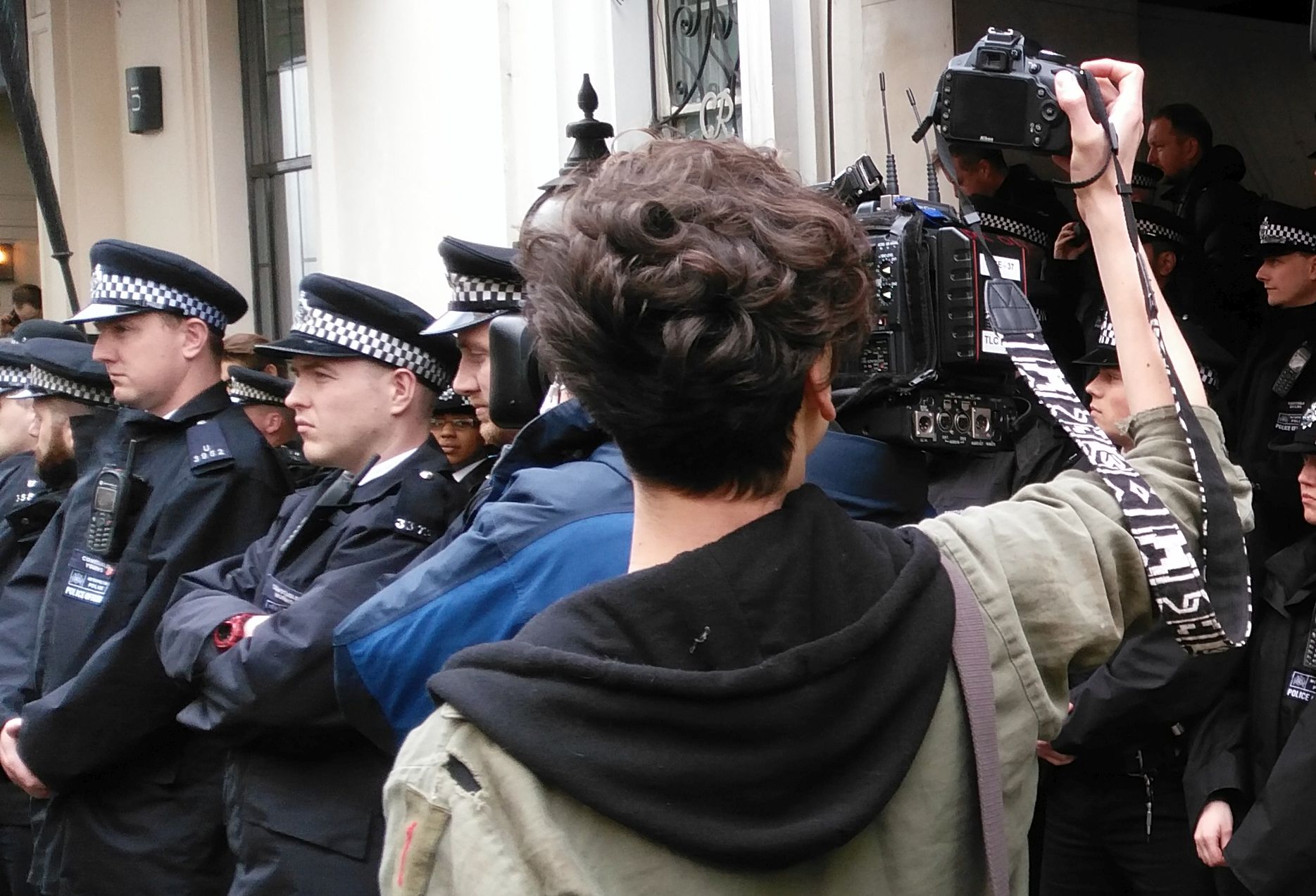Why stop and film?
Ordinary people stopping and filming the police can mean that officers behave differently than they would if no-one was watching and recording their actions. This might make the experience for the person who has been stopped or arrested feel far less intimidating or threatening.
Can I legally film the police?
The Metropolitan Police’s own guidelines (adopted by all police forces in Britain) make clear that “members of the public and the media do not need a permit to film or photograph in public places and police have no power to stop them filming or photographing incidents or police personnel”.
What to remember when filming
Focus on the actions of the officers. Your priority is to collect evidence. Make sure you record police abuse, threats or orders. If nothing interesting is happening, it might still be important to keep the camera rolling, but keep it focused on the police.
Film the officers’ numbers: police officers are supposed to wear them, usually on their shoulders, and this will help to identify them. As well as filming their numbers, you can also read out their numbers on camera, which can help pin officers down later.
Don’t upload and share online anything that the police might use against the person who has been detained, such as swearing.
Film landmarks, such as a street sign or major building at the end of your video. This will prevent the police from saying that your video is of a different event.
Avoid getting involved in what you are filming, keep calm and focus on recording what you see.
Hold you phone sideways rather than upright (in the horizontal ‘landscape’ rather than vertical ‘portrait’ position) so you avoid taking photos or video that looks very narrow and often lacks context (such as what other officers are doing).
Keep your phone still! Avoid moving it around, try and keep a clear and steady shot of important events. If you are having problems with this try focusing your eye on something in the top corner of the screen, this should help. Avoid zooming in and out all the time.
Avoid speak too much or to add a ‘director’s commentary’ as it will distract from what the officers are saying and you may miss out catching something important or discriminatory.
After you’ve finished filming
Keep the footage safe and back it up as soon as you can.
When the person detained is hopefully let go by the police, it’s worthwhile asking if they want to swap details so you can pass them the footage if they need it.
If you are uploading examples of violent or oppressive policing to YouTube or Vimeo, then let us know. E-mail in confidence to netpoladmin@protonmail.com
Please remember the widespread availability of police brutality footage can mobilise some, it has also traumatised many. Maybe we need some ground rules: take a look at this very helpful article on this issue.
Taken from A Rough Guide to Filming Police Stop and Search on the main Netpol website
Right click on the images below to save them and share on your own channels.







Leave a Reply